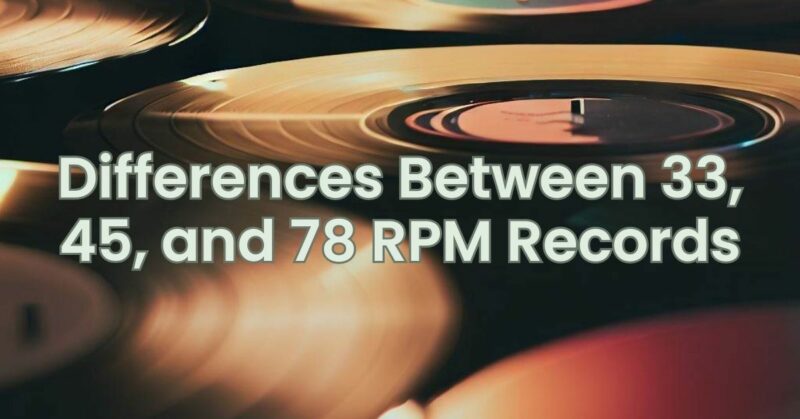Vinyl records come at various speeds, commonly referred to by their rotations per minute (RPM). The most common speeds are 33, 45, and 78 RPM. Each speed serves a specific purpose and is associated with different types of recordings and playback equipment. In this article, we will explore the differences between these three speeds and their significance in the world of vinyl records.
- 33 RPM records are the most common type of vinyl record. They can hold up to 22 minutes of music per side. 33 RPM records are used for albums, LPs (long-playing records), and EPs.
- 45 RPM records are smaller than 33 RPM records. They can hold up to 4 minutes of music per side. 45 RPM records are used for singles and EPs.
- 78 RPM records are the oldest type of vinyl record. They can hold up to 5 minutes of music per side. 78 RPM records are used for classical music and other genres that require a high fidelity sound.
The speed of a vinyl record is also affected by the size of the record. 78 RPM records are typically 10 inches in diameter, while 33 and 45 RPM records are typically 12 inches in diameter.
Here is a table that summarizes the differences between 33, 45, and 78 RPM records:
| RPM | Size | Music per side | Genres |
|---|---|---|---|
| 33 | 12 inches | 22 minutes | Albums, LPs, EPs |
| 45 | 7 inches | 4 minutes | Singles, EPs |
| 78 | 10 inches | 5 minutes | Classical music, high fidelity |
Here are some additional details about the different types of vinyl records:
- 33 RPM records: 33 RPM records are the most common type of vinyl record. They were introduced in 1948 by Columbia Records. 33 RPM records are able to hold more music per side than 78 RPM records, which made them more popular for albums.
- 45 RPM records: 45 RPM records were introduced in 1949 by RCA Victor. They were originally used for singles, but they are now also used for EPs. 45 RPM records are able to hold less music per side than 33 RPM records, but they are able to play at a faster speed, which makes them more suitable for dance music.
- 78 RPM records: 78 RPM records were the first type of vinyl record. They were introduced in 1925. 78 RPM records are able to hold the least amount of music per side, but they have the highest fidelity sound. 78 RPM records are now rare, but they are still popular among collectors.
Understanding the differences between 33, 45, and 78 RPM records is essential for vinyl enthusiasts and collectors. The choice of speed depends on the type of music, the desired playing time, and the era of the recordings. Whether you prefer the immersive experience of a full-length album at 33 RPM, the catchy singles at 45 RPM, or the vintage charm of early recordings at 78 RPM, each speed offers a unique sonic experience. Embrace the diversity of vinyl records and explore the world of music across these various speeds, and you’ll uncover a rich tapestry of sound and history.

